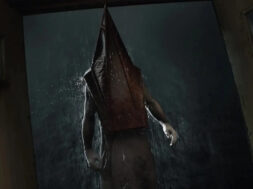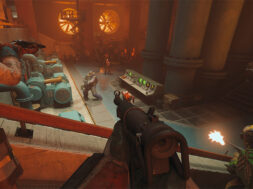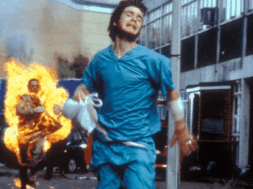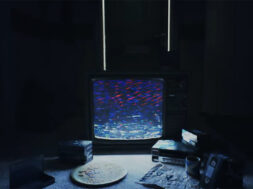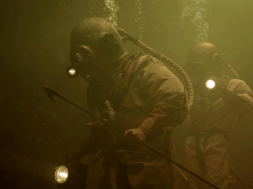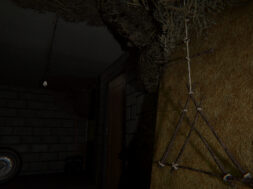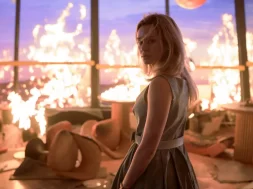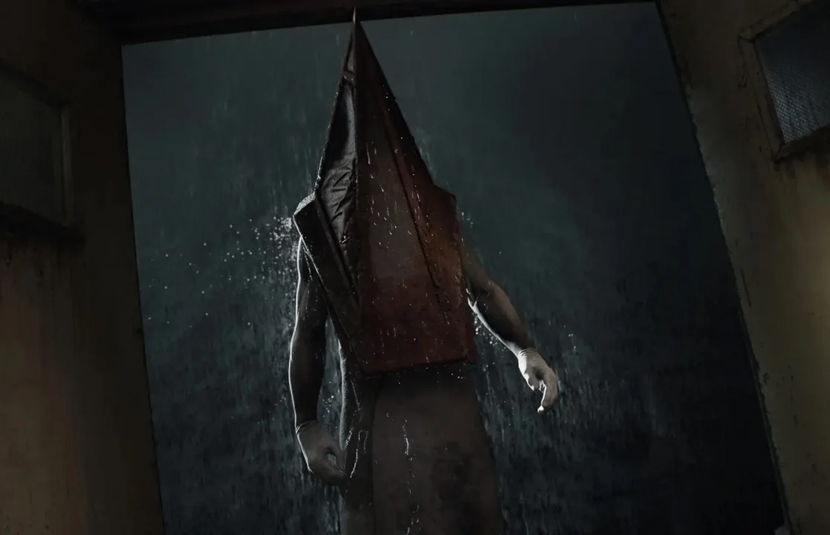
It was announced two years ago that filmmaker Christophe Gans would return to the Silent Hill franchise with the appropriately titled Return to Silent Hill, an adaptation of Silent Hill 2. While that sounds exciting, Bloober Team’s video game remake that was released last month serves as a potent reminder that translating this revered game to screen is an exceedingly tricky task.
The filmmaker adapted the original 1999 video game with 2006’s Silent Hill that mostly adhered to the original game’s plot, remixing a few details for its film adaptation, like swapping out the game’s protagonist of Harry Mason for Radha Mitchell’s Rose Da Silva. It also included the appearance of the franchise’s most iconic monster, Pyramid Head.
The unsettling executioner with a massive rust-hued, pyramid-shaped helmet and unwieldy sword doesn’t actually appear until Silent Hill 2, prompting the game’s fans to cry foul for good reason. The game’s developer, Team Silent, completely flipped the rules in Silent Hill 2. The psychological horror introduced in the original game took on a far more internal, insidious nature in the sequel that tailored the hellish town of Silent Hill into a personal purgatory for those called there. In the sequel, the monsters are harrowing representations of a fractured mind.
Silent Hill 2, for the uninitiated, follows playable character James Sunderland, a milquetoast type beckoned to Silent Hill by a letter from his late wife, Mary, who died three years ago from illness. James arrives to find a strange, isolating fog that has descended upon the quaint town, along with a variety of gnarly creatures. The further James investigates the town for traces of his dead wife, the weirder things get. That includes a few humans that James bumps into along the way, disturbed individuals on their own dark journey as foils for James’ own psychological crisis with guilt and sexual repression.
‘Return to Silent Hill’ Pyramid Head
The further into the game players get, the more is revealed about James as an unreliable narrator and the place itself- a personalized hell tailored to drain all hope from wayward travelers.
Spoiler warning: Major plot points for the game revealed going forward.
James first encounters a young woman named Angela at a lakeside cemetery just outside of town. She’s there searching for her Mama, referencing her missing dad and brother as well. The second foil for James is Eddie, a deceptive character who is more at home with himself than James. Bloober Team’s remake does a tremendous job layering in subtle details throughout the story that hint towards their personal hellscapes.
In an early scene with Eddie at the movie theater, the character psychotically eats from a tub of ice cream with his hands as James makes a few thoughtless remarks that start him on a violent collision path with Eddie that culminates in an intense battle. What makes this scene notable is Eddie’s icy breath as he speaks. It’s not the ice cream; the labyrinth reveals Eddie’s vision of the town to be a frozen hell, a meat locker of frozen corpses, and a constant revolving door of pursuing bullies for Eddie to gun down again and again.
The last scene with Angela reveals her vision of Silent Hill to be a fiery inferno, but for James, the town is a psychosexual nightmare of rust and decay. The monsters are twisted visions plucked from his own psyche; he just doesn’t know it yet. He may never, either, depending on what ending players achieve.
“Return to Silent Hill is a mythological love story about someone so deeply in love, they’re willing to go to hell to save someone,” Christophe Gans said about his sequel in Konami’s teaser. “I’m delighted to have the wonderful talents of both Jeremy Irvine and Hannah Emily Anderson take us on this journey into a psychological horror world that I hope will both satisfy and surprise fans of Silent Hill.”
What’s interesting about Gans’ comments is that James Sunderland, for all his seemingly altruistic words and actions throughout much of the game, isn’t such a romantic peach after all. The final series of confrontations and puzzle-solving in the game reveals the truth behind James’ quest: Mary didn’t die three years before the events of the game but merely days, at best. Mary’s three-year battle with a grave illness transformed her into a spiteful, unrecognizable thing that warped James’ love into hate until he suffocated her to death with a pillow.
It’s not just guilt over Mary’s death but guilt for straying during his wife’s prolonged battle with her illness. That’s reflected in Maria, Mary’s temptress doppelganger, but also in the creatures themselves. James is haunted and hunted by Bobble Heads, Lying Figures, Mandarins, and Mannequins, all twisted forms of the feminine that speak to James’ resentment and sexual repression that amassed over three years as a caregiver to a bedridden wife.
Bloom Team’s vision of Abstract Daddy gives a clearer, discomforting view into Angela’s broken psyche as a physical manifestation of the sexual abuse she endured by her own father. It’s the precise type of boss fight and subject matter that highlights why the game’s multiple trigger warnings are warranted and highlights what makes any adaptation of this game such a daunting project. It’s also the precise type of putrid and bold imagery that most wouldn’t dare approach, not in a movie anyway.
Silent Hill 2 holds up an unflinching mirror to its characters’ ugliest impulses and darkest secrets. Bullying, sexual abuse and assault, and murder are just a few of the prominent sins explored. The town brings humanity’s most repulsive aspects to the surface, creating no shortage of thrilling survival horror stages and skin-crawling encounters in the process. But it’s so perverse and disturbing in subject matter in a way that’s intimidating at best to translate to the big screen. At least not without watering down some of the game’s grimiest story revelations.
The video game remake also captures a pervasive and voyeuristic sense of foreboding that seems difficult to adapt. Occasionally, the sighs of a woman can be heard, an echo of James’ memory of Mary’s final gasps. When James makes his way into the Otherworld version of an already eerie Brookhaven Hospital, the walls audibly breathe. The unrelentingly creepy sound, along with a few almost fourth wall-breaking memos, gives the distinct feeling that James, and the player by extension, is being watched and not so silently judged.
That’s because we are. Silent Hill acts as an ultimate test for atonement or damnation, and the player’s actions shape whether James will succumb to guilt, begin the path toward healing, or doom himself to a repeating cycle of personal hell.
While a video game is a vastly different medium from film, therefore no straightforward adaptation is truly possible, it’s tough to imagine how any feature film version of Silent Hill 2 can translate that constant oppressive feeling of being watched by some otherworldly force. Of the depths of depravity it’s willing to go to force its visitors to confront their ugliest secrets and memories.

Jeremy Irvine as James in ‘Return to Silent HIll’
It’s also much easier to switch gears so dramatically between video game entries, but less so when it comes to film. Not every movie goer plays video games after all, and the 2006 movie established certain rules that will require finesse to reconcile with the game’s lore. Above all, video games like Silent Hill 2 can afford more time to develop nuances than a feature film simply can’t.
Return to Silent Hill doesn’t have a release date yet, though what few teases have been released so far only further support that Gans is a devout Silent Hill fan himself. The film’s teaser video suggests that while this sequel is aiming to be as faithful as possible, we can expect changes that fall in line with Gans’ vision.
“Christophe and I have been working closely with our partners at Konami, as they update the video game, to also create a version of Silent Hill for the theatrical audiences of today,“ producer Victor Hadida explained previously. “You will still find the iconic monsters – but there will also be new designs. We are confident that this new film and Konami’s updated game together will propel the franchise forward for years to come.”
It all but supports the obvious: it’s not possible to recreate a roughly fifteen-hour-long video game into a two-hour film. But if it commits fully to the sound design, atmosphere, and fearless depiction of James’ guilt-ridden, psychosexual manifestations beyond simple visual translations, then it might be poised to become the closest we’ll ever get to seeing this nightmarish classic in theaters.
Stay tuned for more on Return to Silent Hill as we learn it.
